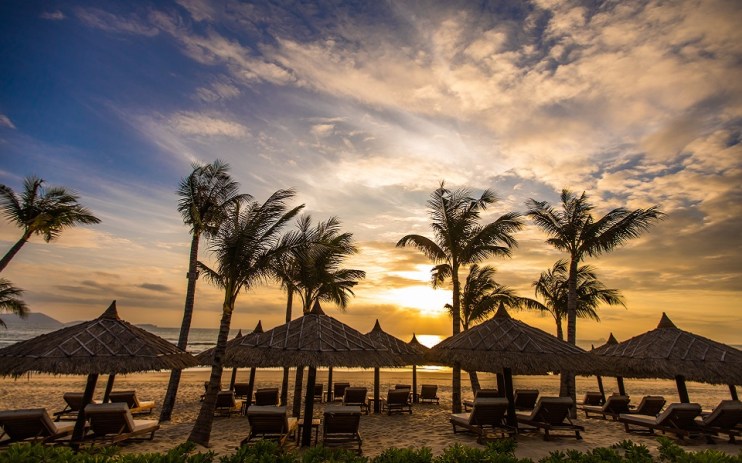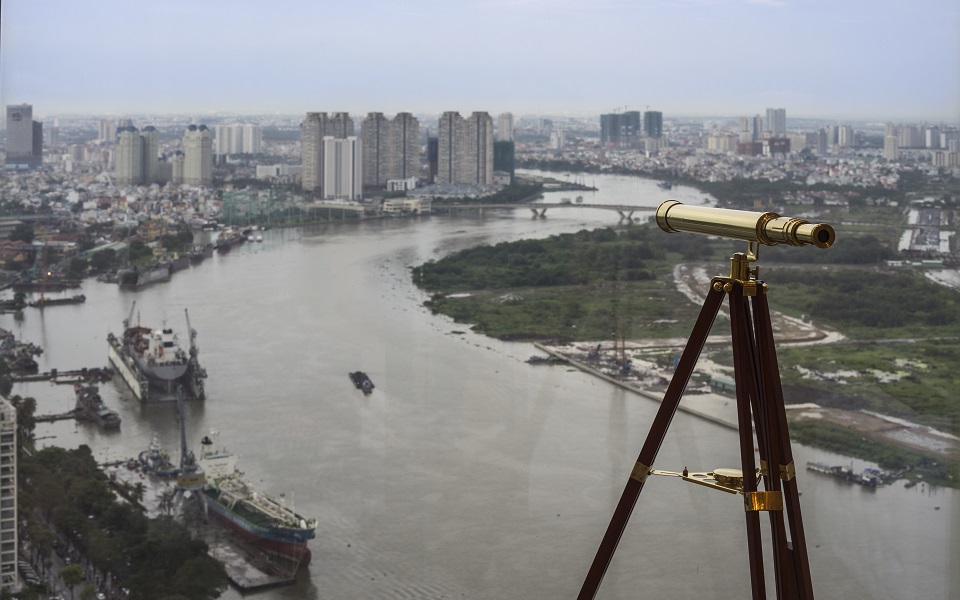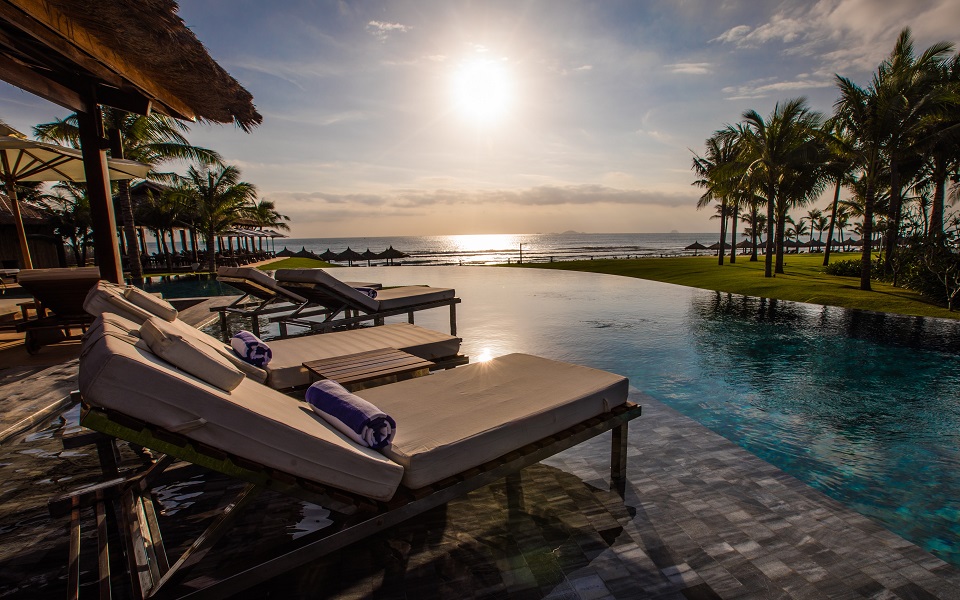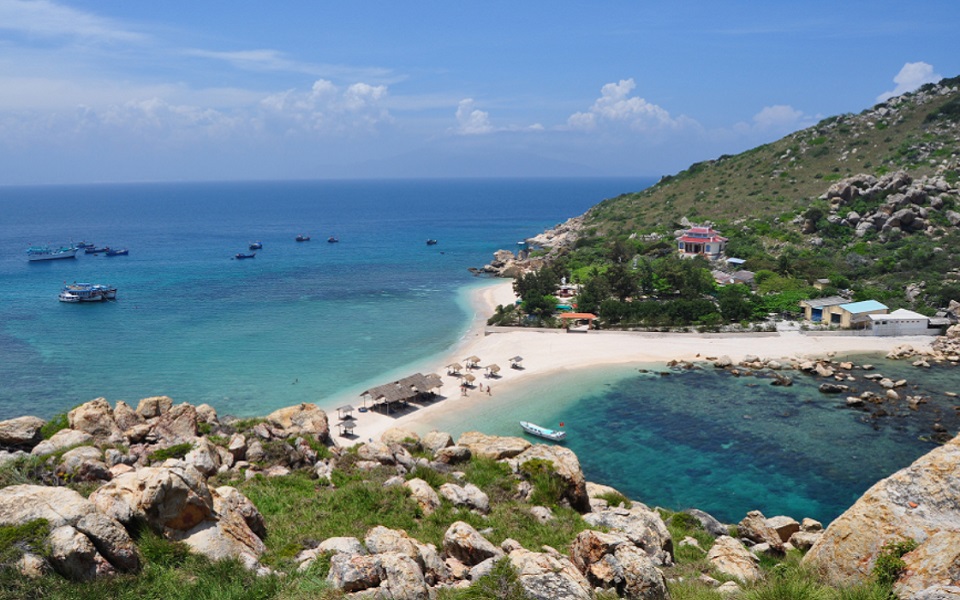As tourism returns, we say: ‘Good morning Vietnam!’

Like much of the world, Vietnam was on its knees these last few years. Around 18 million foreign tourists visited in 2019 compared to a paltry 3,500 in 2021. But now visitors are flocking back. What’s more, there’s never been a better time to go: some high-end resorts are offering 25 per cent discounts on nightly rates.
Rather than instantly flop on the sand though, I set out to better understand the country’s DNA. Vietnam is still viewed through the prism of the Vietnam War by many in the West, and those too young to remember the conflict grew up on a diet of US film and television, where sultry jungles and cool soundtracks contrasted with dehumanising violence.
History pulses throughout the rapidly modernising Ho Chi Minh City, a thirteen hour direct flight from London with Vietnam Airlines. Near my centrally-located hotel I discovered the guerilla-themed coffee chain Cộng Cà Phê, which leans into the country’s history of unrest. When I popped in for a Vietnamese iced coffee made with sweetened condensed milk, the servers were dressed in military fatigues.

The main tourist spots in Ho Chi Minh City are grouped within 30 minutes on foot, so map in hand, I wandered to the War Remnants Museum, a huge and impressive collection of military equipment, photographs, propaganda, and eyewitness accounts detailing the decades of barbarity the Vietnamese struggled through. Colonialism, imperialism, civil war, this resilient nation has survived much adversity. Foreign and local visitors stood in front of exhibits in tears. It’s a powerful, emotional experience, and an essential educational one.
As interesting – but less harrowing – is the nearby Independence Palace. Formerly the residence of the President of South Vietnam, the “Fall of Saigon” symbolically occurred here in 1975. Completed in 1966, the mid-century architecture boasts elements of brutalist and traditional design. I roamed around the cramped basement war rooms and the palatial apartments. Stepping into this exquisitely preserved building feels like stepping into a recent – but very different – past.
But the city also bears the imprint of earlier foreign meddling, from Vietnam’s French colonial period. Fin de siècle architecture abounds, like the impressive Central Post Office and the imposing Notre-Dame Cathedral Basilica, which are must-sees. Vietnamese-Australian celebrity chef Luke Nguyen’s restaurant, Viet House, taps into this legacy. Situated in a colonial-era building also in the centre of town, the fried pork spring roll starters are worth the visit alone.
For cheap eats, visit one of the 1,500 stalls at the Bến Thành Market, a fifteen-minute walk from The Reverie Saigon, where I stayed. A member of The Leading Hotels of the World, The Reverie is located in the city’s sixth tallest building and my room boasted views of the meandering Saigon River and busy skyline. Don’t miss the dim sum at The Royal Pavilion within the hotel, which has a reputation as the best Cantonese restaurant in Vietnam, and ask about taking a rather fabulous champagne river cruise.

After three days in Ho Chi Minh City I felt I had barely begun – but I was catching an hour’s flight north-east to a city called Nha Trang for some relaxation. In a coastal area lined with sophisticated high-end resorts, The Anam launched in April 2017 as Vietnam’s first 5-star colonial-style beach resort. Imagine 300m of white sand beach surrounded by jungle and you’ll have an idea – but nothing can compare to the actual sight. The Indochine aesthetic makes the hotel a picture-perfect destination for sun lounging. They also offer activities, including rewarding Vietnamese cookery lessons. ‘Mama’s Cooking’, a weekly event where a feast of traditional Vietnamese foods is cooked by local mothers, is a rustic treat.
A 30-minute stroll down the coast from the resort I came across an imposing memorial of another conflict. Dedicated to the fallen soldiers of Johnson South Reef, the structure commemorates 64 Vietnamese servicemen killed by Chinese forces in 1988. The soldiers had attempted to claim a reef in the disputed Spratly Island group, which lies in the South China Sea – or Eastern Sea, as the Vietnamese would have it. Socialist realism butts against nationalist romanticism in the spectacular white stonework, which depicts the soldiers holding aloft the Vietnamese flag, surrounded by a 12m tall “circle of immortality”.
Later, I took a complimentary shuttle service from The Anam to nearby Nha Trang city. Locals light-heartedly joke with visitors about the perils of crossing the street here, but the barely organised chaos of the city’s traffic – where heavily ladened scooters swerve unpredictably between larger vehicles – reveals this to be a strain of gallows humour. Nevertheless, if you are feeling daring, Nha Trang is wonderful to explore on foot.

The natural beauty of the Ba Hồ Waterfalls, and the Vinpearl amusement park on nearby Bamboo Island in Nha Trang Bay, accessible from the city by the world’s longest over-sea cable car, mean it would be foolish to visit the region for less than a week. Head a couple of kilometres inland to find the Long Sơn Pagoda, a Buddhist temple complex situated below a hilltop statue of an enormous, seated Buddha. From the base of the statue, visitors can see across the whole city. Or you might head north along the beach-front, crossing the Tran Phu Bridge to visit Po Nagar, an astonishingly intact Hindu temple complex dating from the eighth century. Consisting of a series of red-brown brick towers, it’s like a miniature Angkor Wat.
Many restaurants in Nha Trang offer excellent local cuisine, but a popular tourist spot offering something different is LIVIN Barbecue. Craft beer and surprisingly good American-style smoked meats take you out of the Vietnamese fantasy, and the presence of pop-up shops with local creatives and a hip international clientele mean you could easily mistake the area for somewhere in trendy Hoxton, east London.
Nha Trang also has great nightlife. The Skylight club, situated on an open deck 43 stories above the beach, is where to live your best Gap Year dreams by drinking a boozy bowl of punch and moshing with youthful partygoers. The night I rocked up, an eight-foot-tall Pikachu was maniacally pogo dancing on stage.
Another not-to-miss cultural activity in Nha Trang dating back to the 11th century is water puppet theatre. A traditional art form originally developed in the paddy fields, it involves colourful, carved wooden puppets operated on long poles by performers hidden behind screens. In a purpose-built theatre just off the seafront promenade, I watched them play out scenes from Vietnamese folklore. A key figure in the story was Lê Lợi, a 15th century rebel who became the first king of Vietnam after it regained its independence from Ming Dynasty China. Real events have become entwined with legend, and the story bears some similarities to the tale of King Arthur. Lê Lợi quests to assemble the mystical sword of the Dragon King, and having used it to vanquish his enemies and fulfil his destiny, he returns it to a lake, where it is carried off by a talking turtle.
Lê Lợi feels symbolic of Vietnam. After all, he’s a figure defined by overcoming adversaries. The resilient spirit of the Vietnamese people has seen them shrug off the yoke of imperial powers time and time again, and that spirit will drive their economic recovery now they’ve reopened to tourists. Why not lend them a hand?
Do it yourself
Nightly rates in a Deluxe room at The Reverie Saigon start from £264 inclusive of breakfast. Suites start from £400: thereveriesaigon.com; Nightly rates at The Anam start from £115 for a Balcony Garden View Room: theanam.com; Vietnam Airlines operates nonstop scheduled services to Vietnam, with Dreamliner flights from Heathrow T4 to destinations including Ho Chi Minh City and Nha Trang. Return Economy fares start from £661 per person: vietnamairlines.com.